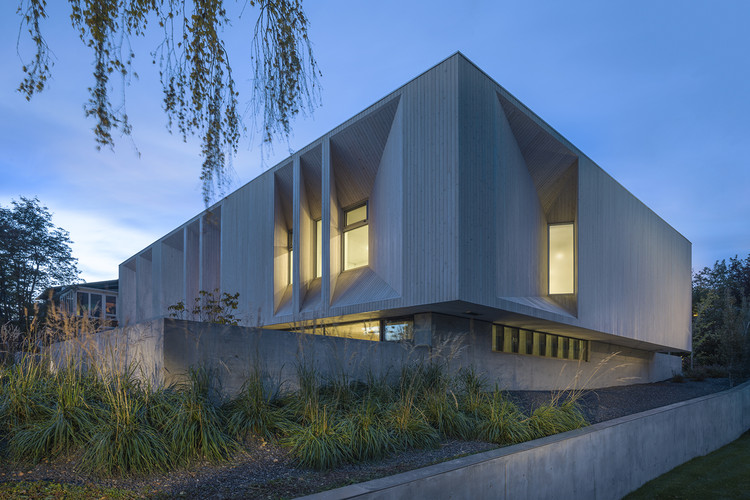
-
Architects: The Marc Boutin Architectural Collaborative
- Area: 3962 m²
- Year: 2019
-
Photographs:Bruce Edward / Tim Smith
-
Manufacturers: AutoDesk, Alumicor, Aquabrass, Blanco, McNeel

Text description provided by the architects. Designed for a couple in Calgary, the client asked for a home that would cater to their need for privacy, and their two tortoises. The responding logic is two-fold: (1) the burying of social program as a means to provide privacy with the resultant framing of nature; and, (2) a hovering volume characterized by a perimeter poché wall that structures privacy and animates the interior via the filtration of light. In the first instance, a perimeter is defined via the woods on the north of the site and its suburban condition on the east and west. This boundary is further emphasized through the concrete walls at ground level which define the social spaces.
































